
CP/M: An Early Operating System
 |
In 1973, a man named Gary Kildall wrote the first PC operating system (using the PL/M program language he invented) called Control Program for Microcomputer (or CP/M). Initially CP/M ran on the Intel 8008 chip, and later translated to the 8080 chip.
IBM entered the personal computer market in 1981, initially licensing an operating system rather than developing and supporting one of their own. IBM approached Kildall to discuss licensing terms for his CP/M operating system. When Kildall missed a meeting with an IBM executive, (though Kildall denies the accuracy of the missed-meeting story) the IBM executive went on to his next appointment—with a company named Microsoft.
Microsoft's Bill Gates seized the licensing opportunity immediately. The rest—Gates' licensing of DOS to IBM—is history.
Similar in design to DOS, CP/M was the industry standard for inexpensive Intel-platform computers by 1981.
MS-DOS and PC-DOS
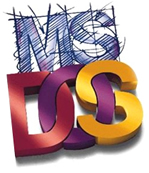 The "Quick and Dirty Operating System" (Q-DOS), first developed by Tim Patterson of Seattle Computer Products, was purchased by Microsoft for $100,000. Microsoft then refined Q-DOS and named it MS-DOS, short for Microsoft Disk Operating System.
The "Quick and Dirty Operating System" (Q-DOS), first developed by Tim Patterson of Seattle Computer Products, was purchased by Microsoft for $100,000. Microsoft then refined Q-DOS and named it MS-DOS, short for Microsoft Disk Operating System.
Since Microsoft licensed IBM to use the MS-DOS operating system, rather than selling it outright Microsoft was able to license MS-DOS to other companies as well.
As a result, the two most prevalent disk operating systems became IBM PC-DOS and MS-DOS. PC-DOS is the version installed on IBM computers, MS-DOS is the version used on most other PCs. Both MS-DOS and PC-DOS are essentially identical, except that Microsoft's Version 6 system contains different add-on utilities.
Microsoft Windows
DOS has evolved from its original incarnation as a text-based program to one that uses a graphical interface. With each new program version, DOS software designers have capitalized on the PC's power and sophistication. Late DOS versions have featured steady improvements designed to support Windows and applications that run on Windows.
Early GUIs
By 1974, Xerox had developed the friendly systems that we take for granted today. Xerox's Alto workstation featured the first Graphical User Interface (GUI), mouse, and computer-to-computer communication. Unfortunately, their short-sighted execs saw no future for the personal computer, and chose to bank on their copier business rather than improvements to personal computing and networking. This turned out to be a big mistake. By the late 1980s, even as DOS was evolving and improving, its limitations were becoming obvious.
Computer-using customers (especially at-home technically-unsophisticated users) wanted machines and software designed and written for non-technical consumers. Without a graphical interface, MS-DOS did not meet the ease-of-access and ease-of-use needs of the growing modern computer customer base.
Apple and Microsoft caught on to the market early, incorporating Alto's user-friendly technology into their own software development, modifying the Macintosh and Windows operating system software to accommodate user needs. The result was the now-familiar user-friendly Macintosh and Windows interfaces that take the technical tedium out of computer access.
- Windows 1.x
Looking more "graphical" than its DOS underpinnings, Windows 1 still did not feature the icons we have come to recognize in today's graphical user interfaces. Some Windows 1 features, however─menu systems, tiled windows, and mouse access─created a benchmark for future, more advanced Windows versions. Windows 1.x also introduced limited multitasking to the PC world.
Multitasking gave personal computer users the illusion that multiple tasks could be managed simultaneously. In actuality, multitasking manages multiple tasks by spending a fraction of a second on each task before switching to another and, eventually, cycling through all the tasks currently running. At no time is the system actually managing more than one process at a time, it just appears that way.
- Windows 2.x
- Windows 3.x
In the late 1980s Windows 2 introduced the familiar desktop file-icons of today's interfaces. Along with the icons, Windows 2 allowed overlapping (not just tiled) application windows. Windows 2 supported program information files (PIF), giving users configuring power to run DOS applications more efficiently. An enhanced version of Windows 2─Windows/386, designed to be compatible with Intel's 386 processor─permitted multiple extended memory DOS sessions.
In 1990, Windows 3 added File Manager, Program Manager, and network support to its ever-adapting functions. Windows 3.0's 386 enhanced-mode opened up the hard drive to virtual memory, supplementing the computer's RAM.
Better graphical and multimedia capability, improved error-protection, and easier application cooperation with object linking and embedding (OLE) accompanied Windows 3.1's 1992 debut. Windows 3.11 did not add any new features but fixed bugs present in Windows 3.1.
Windows for Workgroups added support for peer-to-peer networks to Windows 3x. (Windows 3.1 and 3.11 are both referred to as Windows 3x) Users could share files and printers while providing limited security to resources. Windows for Workgroups also added an e-mail application and a schedule sharing application.
Windows 9.x
Windows 9.x references the following operating systems:
- Windows 95
- Windows 95 and Windows 95 A
- Windows 95 B
- Windows 95 C
- Windows 98
- First Edition
- Second Edition (Windows 98 SE)
- Windows Millennium Edition (Me)
Windows 95
As hardware and software continued to improve, DOS became an obsolete foundation to the Windows graphical interface. In a move to accommodate ever-expanding modern software and hardware capabilities, Microsoft integrated its friendly Windows shell with its operating system to create a major breakthrough in the operating system market.
Up to this point, Windows was simply a management program that ran on top of DOS. Windows users still had to boot their machines to a DOS prompt before accessing the Windows interface. The core operating system that started with Windows 95 is the Windows 9x core. Windows 95, 98, and Me are all Windows 9x-based operating systems.
Windows 95 and Windows 95 A
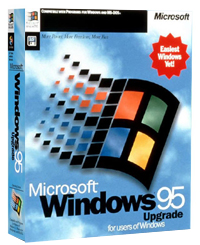 Since Windows 95 was released in August of 1995, Microsoft has made numerous changes and additions to the operating system. There are four versions of Windows 95—an original version, followed by versions A, B, and C.
Since Windows 95 was released in August of 1995, Microsoft has made numerous changes and additions to the operating system. There are four versions of Windows 95—an original version, followed by versions A, B, and C.
The original Windows 95 version is numbered 4.00.950. Like most first releases, Windows 95 A (4.00.950a) improved on the previous Windows 95 by adding the Service Pack 1 update, which provided bug fixes.
Windows 95 is a hybrid 16-bit/32-bit operating system. For speed and stability, 32-bit code is used as often as possible, but 16-bit code is present to ensure compatibility with older DOS and Windows 3.x software (backward compatibility). Windows 95 encourages the use of 32-bit hardware drivers, despite its support for 16-bit DOS, which enables compatibility with old hardware. While the 32-bit code in Windows 95 provides increased stability over Windows 3.1, the legacy 16-bit code still leaves the operating system vulnerable to crashes.
Windows 95 can be used as a complete product for new systems or as an upgrade to Windows 3.x.
Windows 95 B
The enhanced Windows 95 B, also called OSR2, was released to hardware manufacturers for pre-installation on computers that were subsequently sold to customers. OSR2 was not available through retail stores. OSR2’s most important feature is its 32-bit File Allocation Table (FAT32) with updated disk utilities.
FAT32 was a significant advancement for two reasons. First, it enabled DOS and Windows 95 users to create hard drive partitions larger than 2GB. Second, FAT32's better ability to manage a hard drive's sectors also allowed Windows 95 users to better optimize hard drive space.
Windows 95 C
Windows 95 C (or OSR3) added limited support for the Universal Serial Bus (USB). Version C cannot be purchased in a retail store, but Version C's USB functionality can be added to any version of Windows 95 by downloading the file USBSUPP.EXE from Microsoft's Web site (www.microsoft.com).
Windows 98 First Edition
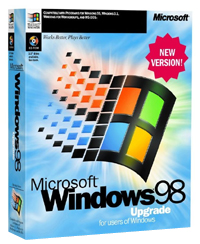 Major revisions to Windows 95 culminated in Microsoft's introduction of Windows 98. Operating intuitively, much like its Windows 95 predecessor, Windows 98 is a more polished version that offers enhanced feature.
Major revisions to Windows 95 culminated in Microsoft's introduction of Windows 98. Operating intuitively, much like its Windows 95 predecessor, Windows 98 is a more polished version that offers enhanced feature.
- Enhanced support for multimedia hardware and software, multiple monitor support, and a helpful Maintenance Wizard.
- Integration of the Internet Explorer 4.0 browser into the operating system. This addition has become quite controversial and the source of much litigation.
- FAT32 support for retail customers was added. The conversion program CVT.EXE was included to help users to upgrade FAT partitions to FAT32.
Windows 98 Second Edition (SE)
Windows 98 SE included the following improvements:
- More complete network security features
- A specification utility for removable disks and other storage hardware
- Internet Connection Sharing (ICS) that enables networked computers to share one Internet connection
- Upgrade from Internet Explorer 4.0 to 5.0
Windows Millennium Edition (Windows Me)
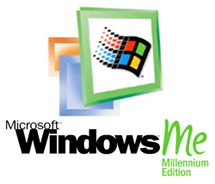 Windows Me, a consumer/personal/home operating system released in 2000, was Microsoft's last offering of the purely 9x core. While still a hybrid 16-bit/32-bit DOS-based operating system, Windows Me took extensive steps to hide the DOS environment from users in an attempt to make the system even more user friendly.
Windows Me, a consumer/personal/home operating system released in 2000, was Microsoft's last offering of the purely 9x core. While still a hybrid 16-bit/32-bit DOS-based operating system, Windows Me took extensive steps to hide the DOS environment from users in an attempt to make the system even more user friendly.
Windows Me introduced system recovery features that allowed the computer to recover from corrupted system files. To increase system stability, Windows Me included tools to automatically update the system as bug fixes and enhancements became available.
Microsoft's next consumer operating system, Windows XP, strives to merge the friendliness and ease-of-use of the Windows 9x core and the stability and security of the NT core. Windows 2000 also merged the two cores but does not feature a slimmed-down home version.
Windows NT
Windows New Technology (NT) operating system, specifically designed for network application features 32-bit code and 4 gigabyte-RAM potential. Windows NT attracts power users who often run large files and sophisticated programs, and who require more security assurance than mainstream desktop computer users.
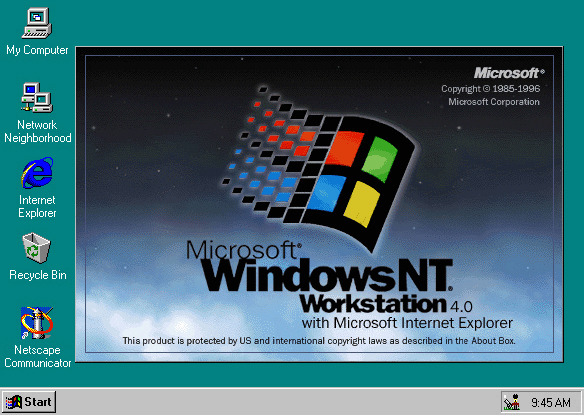
NT is an entirely different operating system than DOS-based Windows 3x and 9x.Windows NT can be installed with Windows 9x in a dual-boot configuration—a system with an alternate operating system installed.
Windows NT is available in three versions:
- NT Server—for network servers
- NT Enterprise Server—for network servers
- NT Workstation—for workstation or stand-alone computers
- NT 3.1
-
Microsoft's initial (1993) "New Technology" operating system, NT 3.1, resembled Windows 3.1 in appearance, but worked quite differently underneath. Without its cousin's DOS genes, NT 3.1 was a dependable operating system, but required more powerful hardware to run effectively. NT 3.1 featured 6,000,000 lines of "bug-riddled" code, necessitating Microsoft's release of repair patch files.
- NT 3.5 and 3.51
-
NT 3.5x (released in 1994) was built on 9,000,000 lines of code. In 1995 NT 3.51 improved the NT operating system to accommodate many Windows 95 programs. Though functionally improved, NT 3.51's Program Manager interface still retained the look and feel of its older Window 3.1 relatives.
- NT 4.0
Microsoft's 1996 introduction of NT 4.0 brought 16,000,000 lines of code into its very friendly traditional Windows 95 interface. Maintaining all previous enhancements, the newest incarnation of Windows NT offered Web server capability and network application distribution. Unlike Windows 95, NT 4.0 does not offer Plug and Play support.
Windows 2000
Windows 2000 is an upgrade to the NT core. The "look and feel" of Windows 2000 (also known as Windows NT 5.0) is similar to the Windows Me interface, including full integration of Microsoft's Internet Explorer 5.0.
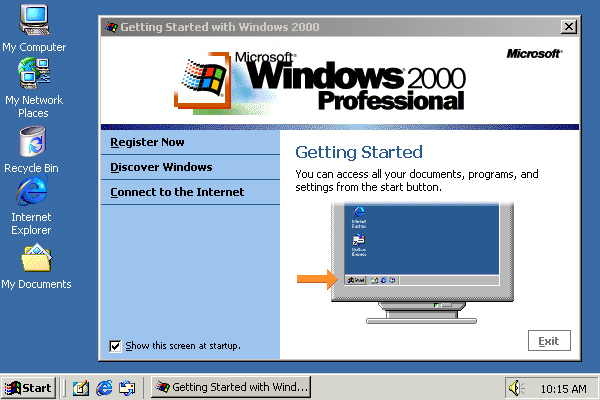
Windows 2000 does not just give NT a fancy facelift; it also adds many desirable feature to NT's core. Plug and Play is added to Windows 2000, as well as USB support. Windows 2000 also includes multimedia enhancements such as DirectX 7 for games and multimedia applications.
Windows 2000 features greater integration of Internet applications. The Internet Explorer browser is accessible instantly from any explorer interface window. (i.e., The "My Computer" window). Windows 2000 also adds the following enhancements:
- Internet Connection Sharing (ICS)
- Virtual Private Networking (VPN), a feature that allows computers to securely transfer data across the Internet as though they were on the same network.
Windows Me was also released in 2000, but for a different market. Windows 2000 is designed for professional use and Me for home users. Further, Me is based on Windows 9x, while 2000 is a hybrid of 9x and Windows NT.
